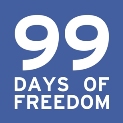As Wikipedia puts it (partly) volunteering is: “An altruistic activity and is intended to promote good or improve human quality of life. In return, this activity produces a feeling of self-worth and respect; however, there is no financial gain”. But the most fascinating thing about this definition is that it holds true for this age too. Many verbs have received different definitions in contemporary times, but some have adopted accordingly. “Volunteer” is one.
A couple or a decade ago, it was all about charity related work where you would offer your effort and/or skills for a social event. But now there are many other activities that one could perform on the internet, which upholds the same values. It’s mainly two-fold as skills & effort, but eventually the same thing. As with offline volunteering, these are mainly performed for proprietary entities or non-profit organisations. At the end of the day, the world benefits, the online community benefits.
Although the topmost activity in this sphere is devoted to the
Open-source movement, I wish to focus on a few popular products/websites that rely on
Crowdsourcing. Crowdsourcing itself is a new-age term, which could be broadly defined as,
“obtaining the efforts of a crowd (volunteers)”.
Wikipedia is the best and most popular example. What more, even this article has a couple of hyperlinks to it already. This online encyclopaedia is almost totally built on the efforts of thousands of contributing volunteers. Not only the submissions, but moderations too are handled in a similar nature by ‘administrators’ who are chosen from the previously mentioned fervent contributors. That helps in maintaining the credibility, which is always a common question raised against crowd-sourced content.
My next focus is a company, and a popular one in Google Inc. Google’s products have now become necessary platforms for thousands of other products and services both online & offline. For example,
Google Maps is one such platform. The fact that people are able to contribute to it has resulted in the rapid expansion and improvement of the product itself. Anyone could contribute to “GMaps” through the
Map Maker tool which was launched about 5 years ago. Talking about maps, a special mention of a non-commercial/non-profit counterpart in
OpenStreetMap also needs to be made. There may be differences in content and quality between the two, but they both acquire and deliver the same kind of service.
Apart from maps and among many others, there were other programmes such as (now suspended) “Google in Your Language”, where they obtained the contributions from volunteers in order to localize their products.
Even though there is no guarantee on the numerous types of ways your contributions could be used in a final output, the age old saying of “volunteer to make a better world” still stands, even in this day and age with a sense of self-satisfaction.
 You’d probably heard of the “99 days of freedom” campaign. It’s basically a pledge you make to not visit Facebook for 99 days, while informing others of your decision in advance. I’ve seen several of my friends adopting the practice in recent times. Some even did it regularly. When they are back, they usually express a feeling which encompasses a high degree of satisfaction. I of course haven’t done it, but thought of how it would have felt to them. Then my thoughts stumbled across a few parallels.
You’d probably heard of the “99 days of freedom” campaign. It’s basically a pledge you make to not visit Facebook for 99 days, while informing others of your decision in advance. I’ve seen several of my friends adopting the practice in recent times. Some even did it regularly. When they are back, they usually express a feeling which encompasses a high degree of satisfaction. I of course haven’t done it, but thought of how it would have felt to them. Then my thoughts stumbled across a few parallels. An important piece of information in that article is regarding the regulations and distance prohibiting kite-flying. I wondered if there were similar regulations in our country as well. Therefore I phoned the airport and inquired. According to the officer who answered me, there were no such specific laws or regulations which prohibited the leisure-time activity, but they will request the relevant local police stations to take action to clear the “sky paths” if needed. When I inquired of the height and distance from the airport that might be acceptable to fly a kite, he didn’t give any numbers. But explained to me how aeroplanes and low-flying helicopters encounter difficulties while approaching or departing the airport. August being the kite-season was a reason for the announcement to go out.
An important piece of information in that article is regarding the regulations and distance prohibiting kite-flying. I wondered if there were similar regulations in our country as well. Therefore I phoned the airport and inquired. According to the officer who answered me, there were no such specific laws or regulations which prohibited the leisure-time activity, but they will request the relevant local police stations to take action to clear the “sky paths” if needed. When I inquired of the height and distance from the airport that might be acceptable to fly a kite, he didn’t give any numbers. But explained to me how aeroplanes and low-flying helicopters encounter difficulties while approaching or departing the airport. August being the kite-season was a reason for the announcement to go out.